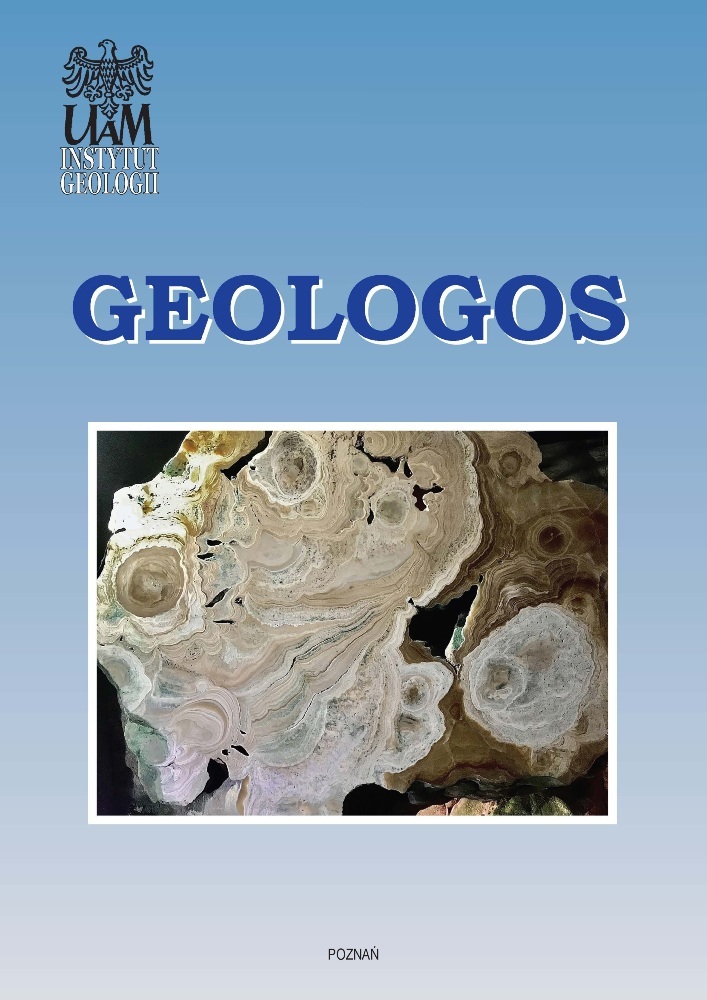Abstract
Techniques that allow to render diverse types of palaeontological data as publicly available internet resources are described. In order to develop an easily accessible digital palaeontological database, three steps should be followed: (1) digitization of the studied specimens, (2) acquisition of morphometric data, and (3) contribution of the data to open and searchable geoinformatic (palaeontological) databases. Digital data should be submitted to internet databases that allow a user to fetch various types of information from dispersed sources (semantic web services).
References
Alroy, J., Aberhan, M., Bottjer, D. J., Foote, M., Fürsich, F. T., Harries, P. J., Hendy, A. J., Holland, S. M., Ivany, L. C., Kiessling, W., Kosnik, M. A., Marshall, C. R., McGowan, A. J., Miller, A. I., Olszewski, T. D., Patzkowsky, M. E., Peters, S. E., Villier, L., Wagner, P. J., Bonuso, N., Borkow, P. S., Brenneis, B., Clapham, M. E., Fall, L. M., Ferguson, C. A., Hanson, V. L., Krug, A. Z., Layou, K. M., Leckey, E. H., Nürnberg, S., Powers, C. M., Sessa, J. A., Simpson, C., Tomasovych, A. & Visaggi, C. C., 2008. Phanerozoic trends in the global diversity of marine invertebrates. Science 321, 97-100.
Berendsohn, W. G., 1995. The concept of "potential taxa" in databases. Taxon 44, 207-212.
Chandrasekaran, B., Johnson, T. & Benjamins, V., 1999. Ontologies: what are they? Why do we need them? IEEE Intelligent Systems and their Applications 14, 20-26.
Choh, S.-J. & Milliken, K. L., 2004. Virtual carbonate thin section using PDF: new method for interactive visualization and archiving. Carbonates and Evaporites 19, 87-92.
De Keyser, T. L., 1999. Digital scanning of thin sections and peels. Journal of Sedimentary Research 69, 962-964.
Di, L. & McDonald, K., 1999. Next generation data and information systems for earth sciences research. Proceedings of the First International Symposium on Digital Earth. Science Press, Beijing, China, 92-101.
Gahegan, M., Luo, J., Weaver, S. D., Pike, W. & Banchuen, T., 2009. Connecting GEON: Making sense of the myriad resources, researchers and concepts that comprise a geoscience cyberinfrastructure. Computers & Geosciences 35, 836-854.
Gruber, T. R., 1993. A translation approach to portable ontology specifications. Knowledge Acquisition 5, 199-220.
Huber, R. & Klump, J., 2009. Charting taxonomic knowledge through ontologies and ranking algorithms. Computers & Geosciences 35, 862-868.
Krell, F.-T., 2000. Impact factors aren't relevant to taxonomy. Nature 405, 507-508.
Lamoureux, F. & Bollmann, J., 2004. Image acquisition. [In:] P. Francus (ed.): Image analysis, sediments and paleoenvironments. Springer Science+Business Media, Dordrecht, 11-34.
Lutz, M., 2007. Ontology-based descriptions for semantic discovery and composition of geoprocessing services. Geoinformatica 11, 1-36.
Lyons, P. D., Rioux, M. & Patterson, T., 2000. Application of a three-dimensional color laser scanner to paleontology: an interactive model of a juvenile Tylosaurus sp. basisphenoid-basioccipital. Palaeontologia Electronica 3 (2), 16 pp.
MacLeod, N. & Guralnick, R., 2000. Paleoinformatics. [In:] R. H. Lane, F. F. Steininger, R. L. Kaesler, W. Zeigler & J. Lipps (eds): Fossils and the future: Paleontology in the 21st century. Senckenberg Museum, Frankfurt, 31-36.
Molineux, A., Scott, R. W., Ketcham, R. A. & Maisano, J. A., 2007. Rudist taxonomy using X-ray computed tomography. Palaeontologia Electronica 10, 6 pp.
Pirard, E., 2004. Image measurements. [In:] P. Francus (ed.): Image analysis, sediments and paleoenvironments. Springer Science+Business Media, Dordrecht, 59-86.
Rees, P. M., Alroy, J., Scotese, C., Memon, A., Rowley, D. B., Parrish, J. T., Weishampel, D. B, Platon, E., O'Leary, M. A. & Chandler, M. A., 2007. Phanerozoic earth and life: the Paleointegration Project. Abstracts, GSA Geoinformatics Division, San Diego (May 2007), Paper No. 5-9.
Reitsma, F., Laxton, J., Ballard, S., Kuhn, W. & Abdelmoty, A., 2009. Semantics, ontologies and eScience for the geosciences. Computers & Geosciences 35, 706-709.
Ruban, D. A. & Van Loon, A. J., 2008. Possible pitfalls in the procedure for paleobiodiversity-dynamics analysis. Geologos 14, 37-50.
Smith, N. E. & Strait, S. G., 2008. PaleoView3D: from specimen to online digital model. Palaeontologia Electronica 11, 17 pp.
Stearn, C. W., 1999. Easy access to doubtful taxonomic decisions. Palaeontologia Electronica 2, 4 pp.
Theodor, J. M. & Furr, R. S., 2009. High dynamic range imaging as applied to paleontological specimen photography. Palaeontologia Electronica 12, 30 pp.
Valdecasas, A. G., Castroviejo, S. & Marcus, L. F., 2000. Reliance on the citation index undermines the study of biodiversity. Nature 403, 698.
White, J. V., Kirkland, B. L. & Gournay, J. P., 1998. Quantitative porosity determination of thin sections using digitized images. Journal of Sedimentary Research 68, 220-222.
Wilhite, R., 2003. Digitizing large fossil skeletal elements for three-dimensional applications. Paleontologica Electronica 5, 10 pp.
Wolniewicz, P., 2009. Late Famennian stromatoporoids from Dębnik Anticline, southern Poland. Acta Palaeontologica Polonica 54, 337-350.
License
This content is open access.
